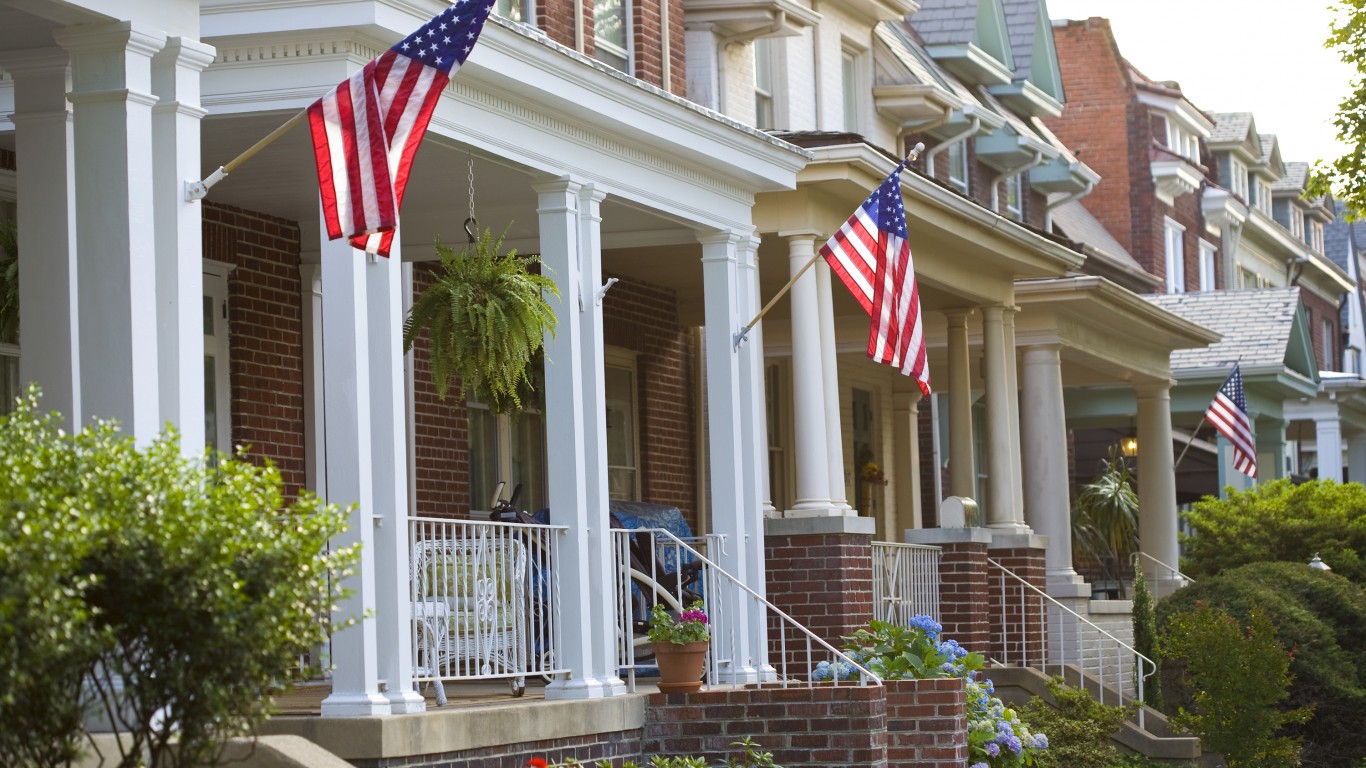
Economic signs point to a cool-down in the nation’s housing market. Twenty-eight property analysts polled by Reuters in May predicted U.S. home prices would rise 10.3% this year based on the Case/Shiller index. While that estimate may sound promising, it is well off from the current pace of around 20%. That means that prices in some markets will undoubtedly fall.
According to Realtor.com’s April data, demand for housing has continued to moderate as buyers have had to consider both rising home prices and rising mortgage rates. The average rate on a 30-year mortgage in the last week of May stood at 5.27%, according to Bankrate, more than double the 2.5% rate at the end of 2021. Meanwhile, median home list price grew in April to a new all-time high of $425,000, a 14% increase from last year.
Realtor.com’s data also shows that the number of listings that are in the process of being sold declined, and new listings have increased. Inventory is projected to grow compared to last year in the coming weeks.
While the national housing market seems to remain strong, these conditions, which favor buyers, have begun to take hold in some markets, where housing prices are under pressure. (Conversely, these are the metros where home prices shot up this year.)
To find the U.S. cities where home prices are falling, 24/7 Wall St. reviewed Realtor.com’s report Home Prices Have Begun Falling: Here Are the Cities Where They’re Down the Most. Realtor.com looked at the year-over-year change in median list prices in the 100 largest metros in March, limiting the list to just one metro per state for geographic diversity. Cities are ranked from the smallest fall in annual median listing price to the largest.
While median list prices have dropped in these cities, some of the metros noted here mirror the national trend of fewer homes listed for sale and homes remaining shorter times on the market. In these cases, often the reason for the lower median list price is that smaller housing units are coming on to the market.
Though nearly all these housing markets enjoyed a robust two-year period where prices shot up, the median list price in nearly all the cities on the list is well under Realtor.com’s national median list price in April. In many of these cities, some sellers are taking advantage of the high prices and trying to sell their homes. In these markets, listings are higher and homes remain on the market for longer. (These are the states with the worst foreclosure rates this year.)
Click here to see 10 US cities where home prices are actually falling

10. Richmond, VA
> Median listing price, March: $310,000
> Annual change in median listing price: -3.4%
According to the Richmond Association of Realtors, active listings dipped by 11% to 1,536 since the beginning of the year. Despite the low inventory, Realtor.com notes that many smaller housing units have been listed at a lower price than most single-family homes, dragging down median list price. Also, many agents underprice homes to encourage bidding wars.
[in-text-ad]

9. Chicago, IL
> Median listing price, March: $399,000
> Annual change in median listing price: -3.7%
Illinois Realtors reports active listings took a 34% tumble in the Chicago metro area, dropping from 18,633 to 12,281 between February of last year and February 2022. According to Redfin, selling times have lengthened in the Windy City, going from 20 days on the market last year to 53 days in April, indicative perhaps of more selective and fewer buyers. Another reason for the decline in median list price is the many condos now listed in the area.

8. Memphis, TN
> Median listing price, March: $173,500
> Annual change in median listing price: -4.6%
Memphis has been a hot housing market since the beginning of the pandemic, popular with locals and out-of-towners alike. But that has led the city to become one of the most overpriced housing markets in the country, according to a report from Florida Atlantic University’s College of Business. Further contributing to the decline in median list price is the higher inventory and smaller homes going up for sale. New listings are up 5.4% from the same time last year, according to Realtor.com.

7. Los Angeles, CA
> Median listing price, March: $985,000
> Annual change in median listing price: -5.0%
Is La La Land losing its luster? Many would-be homebuyers have already been priced out of the expensive Los Angeles market, and with mortgage rates increasing, buyers are even more cautious. Realtor.com reports that bidding wars are not as aggressive. The addition of smaller houses now listed on the market has contributed to the lower median list price.
[in-text-ad-2]

6. Tulsa, OK
> Median listing price, March: $220,000
> Annual change in median listing price: -5.0%
Once dominated by the oil and energy companies, Tulsa now sports a more diversified economy with aerospace, finance, high tech, and manufacturing. Like in other markets on the list, the median list price has declined likely because of the increase in smaller homes coming on to the market.

5. Springfield, MA
> Median listing price, March: $239,900
> Annual change in median listing price: -5.8%
Home prices in Springfield shot up so much last year that CoreLogic Market Risk Indicator predicted in January that Springfield was one of the cities at the highest risk of a decline in home prices over the next 12 months. Some of the pressure may be already showing. The city had 606 homes for sale in April, up 11.2% from March. And according to Movoto, the median days on the market was 36 compared to nine days last year. With smaller homes coming onto the market, median list price has declined.
[in-text-ad]

4. Pittsburgh, PA
> Median listing price, March: $230,000
> Annual change in median listing price: -13.7%
According to real estate data collection company Attom, Pittsburgh and the seven counties surrounding it saw median home prices fall 6% between the fourth quarter of 2021 and the first quarter of this year, slumping from $180,000 to $169,000. In addition, in Pittsburgh, smaller units are coming on to the market.

3. Detroit, MI
> Median listing price, March: $75,000
> Annual change in median listing price: -15.4%
With median home prices less than $100,000, Detroit is one of the most affordable cities in the U.S.And buyers have taken note: the number of new listings has been increasing, providing some relief to homebuyers. Still, Motor City’s population has been declining for decades and though it has had a recent revival, population continues to dwindle.

2. Rochester, NY
> Median listing price, March: $149,900
> Annual change in median listing price: -17.0%
Rocket Homes rated Rochester as a neutral housing market, meaning prices are reasonable and houses remain on the market for a typical length of time. Still, there has been an increase in new listings as local investors are trying to take advantage of recent price increases.
[in-text-ad-2]

1. Toledo, OH
> Median listing price, March: $115,000
> Annual change in median listing price: -18.7%
Located on the banks of Lake Erie, Toledo remains an affordable housing market. The city shared the economic difficulties of the rest of the Rust Belt, and though housing prices have jumped since 2019, it seems prices are starting to cool down, according to Realtor.com, as higher unemployment and mortgage rates are keeping buyers in check.
Get Ready To Retire (Sponsored)
Start by taking a quick retirement quiz from SmartAsset that will match you with up to 3 financial advisors that serve your area and beyond in 5 minutes, or less.
Each advisor has been vetted by SmartAsset and is held to a fiduciary standard to act in your best interests.
Here’s how it works:
1. Answer SmartAsset advisor match quiz
2. Review your pre-screened matches at your leisure. Check out the advisors’ profiles.
3. Speak with advisors at no cost to you. Have an introductory call on the phone or introduction in person and choose whom to work with in the future
Thank you for reading! Have some feedback for us?
Contact the 24/7 Wall St. editorial team.
 24/7 Wall St.
24/7 Wall St.